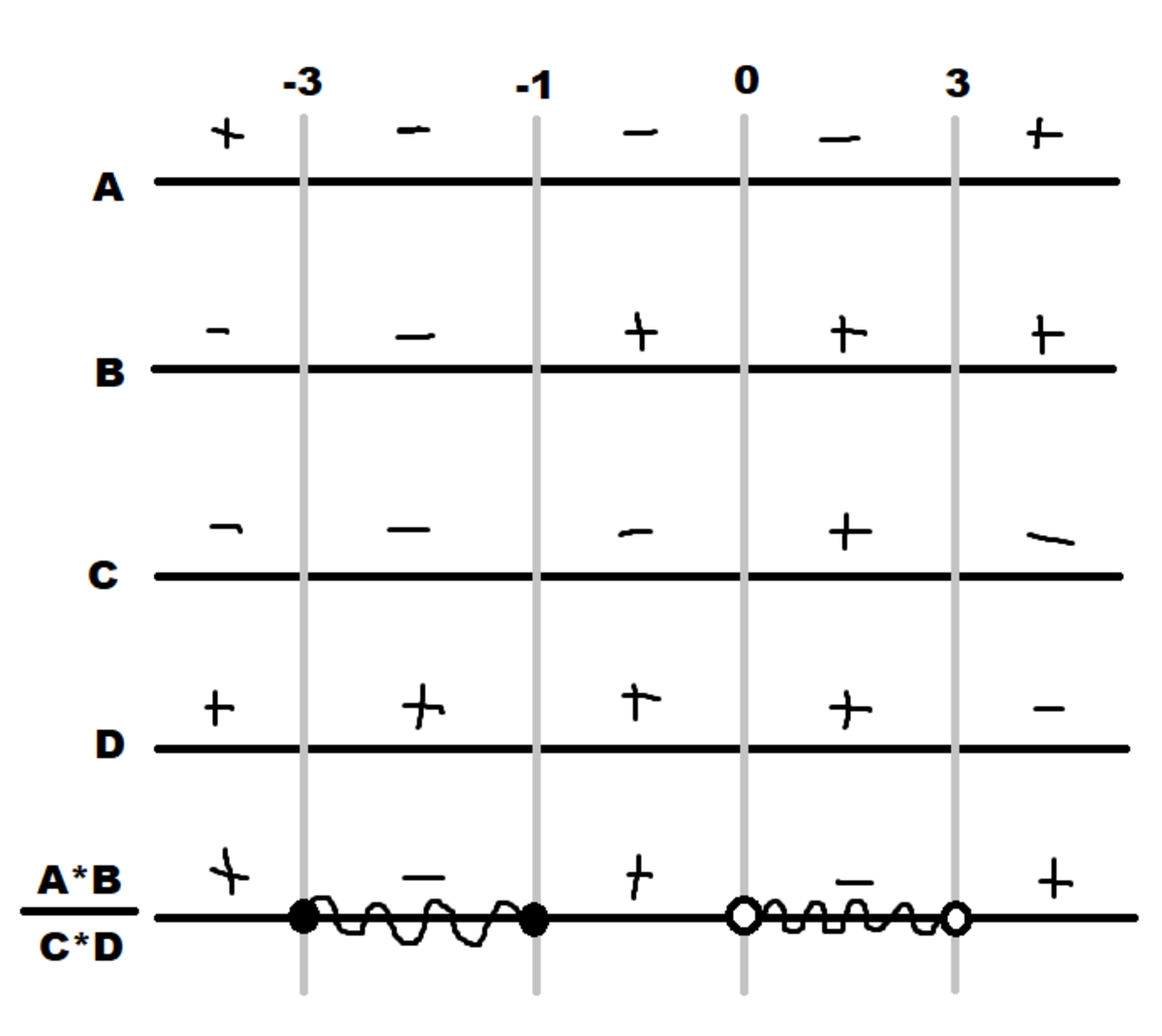Inequality with product and division
Algebra
Level
3
What is the sum of all the integers solutions for this inequality:
0
3
-3
-6
This section requires Javascript.
You are seeing this because something didn't load right. We suggest you, (a) try
refreshing the page, (b) enabling javascript if it is disabled on your browser and,
finally, (c)
loading the
non-javascript version of this page
. We're sorry about the hassle.





Step 1: Find when the numerator switches signs.
( x 2 − 9 ) ( 2 x + 2 )
2 ( x − 3 ) ( x + 3 ) ( x + 1 )
The roots are -3, -1, and 3.
Since the leading coefficient is positive, as x → ∞ , y → ∞
Since polynomial has a degree of 3, as x → ∞ , y → − ∞ and the sign switches with each root.
Therefore the signs of values of x from -4 to 4 are:
Step 2: Find when the denominator switches signs.
( − 2 x 2 + 6 x ) ( − x + 3 )
2 x ( x − 3 ) ( x − 3 )
2 x ( x − 3 ) 2
The roots are 0 and 3 (second degree).
Since the leading coefficient is positive, as x → ∞ , y → ∞
Since polynomial has a degree of 3, as x → ∞ , y → − ∞ and the sign switches with each root except 3.
Therefore the signs of values of x from -4 to 4 are:
Step 3: Find when the numerator and denominator have different signs or when the numerator is zero and the denominator is nonzero.
Such values of x are -3, -2, -1, 1, and 2. The sum of these numbers is − 3